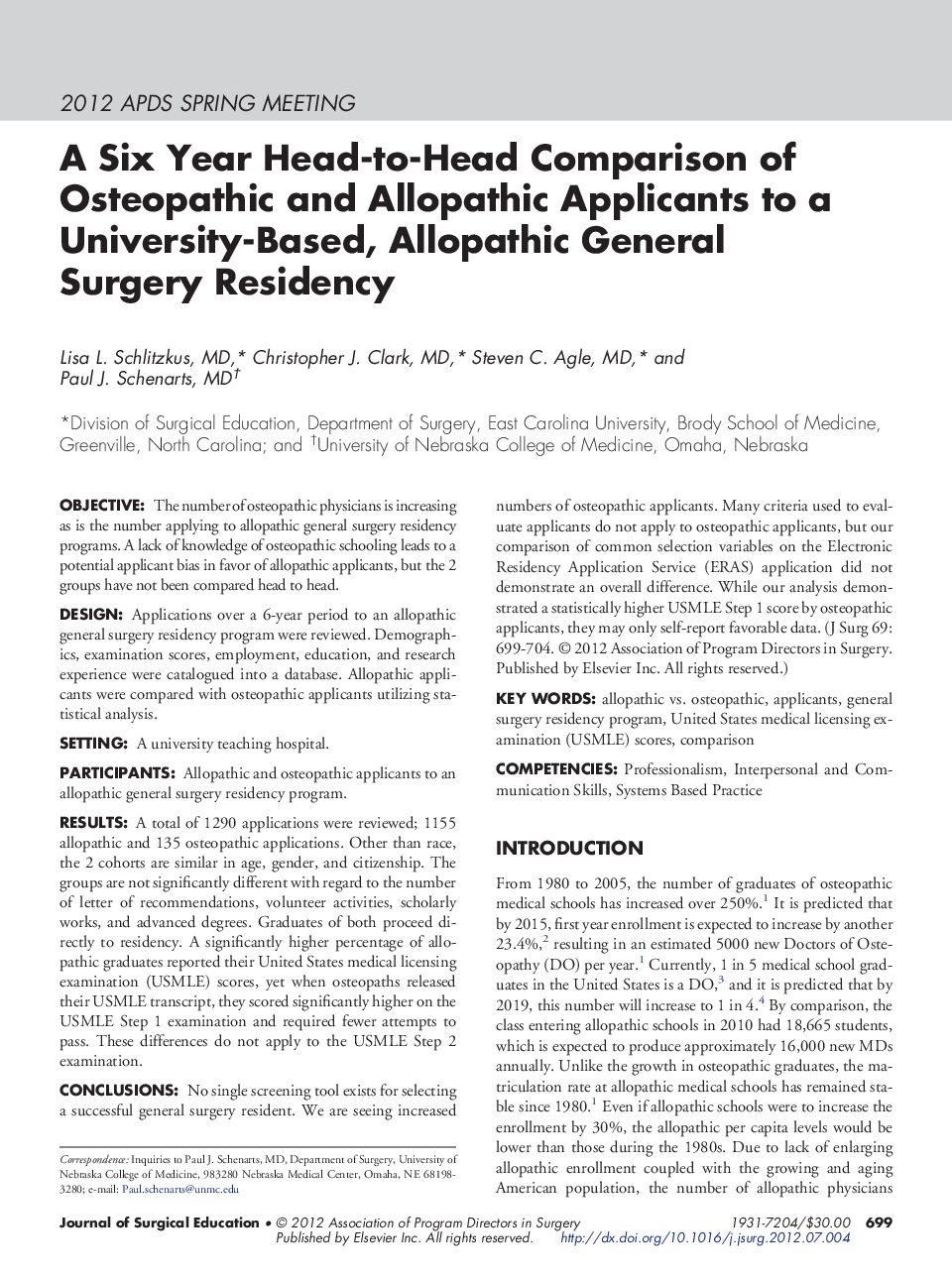| Article ID | Journal | Published Year | Pages | File Type |
|---|---|---|---|---|
| 4298245 | Journal of Surgical Education | 2012 | 6 Pages |
ObjectiveThe number of osteopathic physicians is increasing as is the number applying to allopathic general surgery residency programs. A lack of knowledge of osteopathic schooling leads to a potential applicant bias in favor of allopathic applicants, but the 2 groups have not been compared head to head.DesignApplications over a 6-year period to an allopathic general surgery residency program were reviewed. Demographics, examination scores, employment, education, and research experience were catalogued into a database. Allopathic applicants were compared with osteopathic applicants utilizing statistical analysis.SettingA university teaching hospital.ParticipantsAllopathic and osteopathic applicants to an allopathic general surgery residency program.ResultsA total of 1290 applications were reviewed; 1155 allopathic and 135 osteopathic applications. Other than race, the 2 cohorts are similar in age, gender, and citizenship. The groups are not significantly different with regard to the number of letter of recommendations, volunteer activities, scholarly works, and advanced degrees. Graduates of both proceed directly to residency. A significantly higher percentage of allopathic graduates reported their United States medical licensing examination (USMLE) scores, yet when osteopaths released their USMLE transcript, they scored significantly higher on the USMLE Step 1 examination and required fewer attempts to pass. These differences do not apply to the USMLE Step 2 examination.ConclusionsNo single screening tool exists for selecting a successful general surgery resident. We are seeing increased numbers of osteopathic applicants. Many criteria used to evaluate applicants do not apply to osteopathic applicants, but our comparison of common selection variables on the Electronic Residency Application Service (ERAS) application did not demonstrate an overall difference. While our analysis demonstrated a statistically higher USMLE Step 1 score by osteopathic applicants, they may only self-report favorable data.
